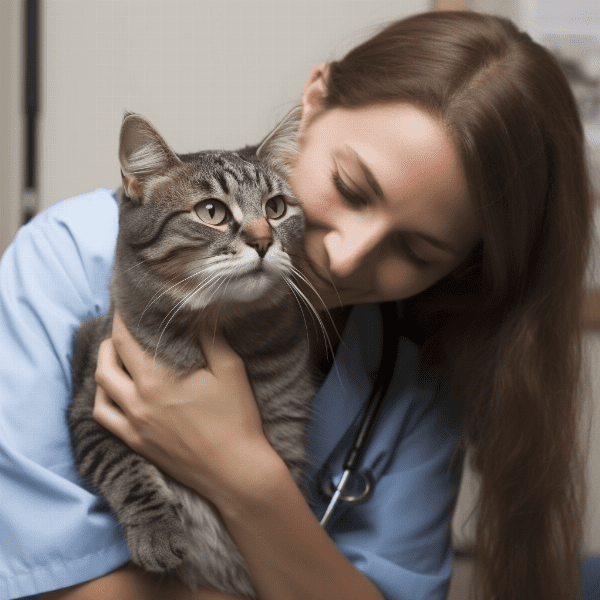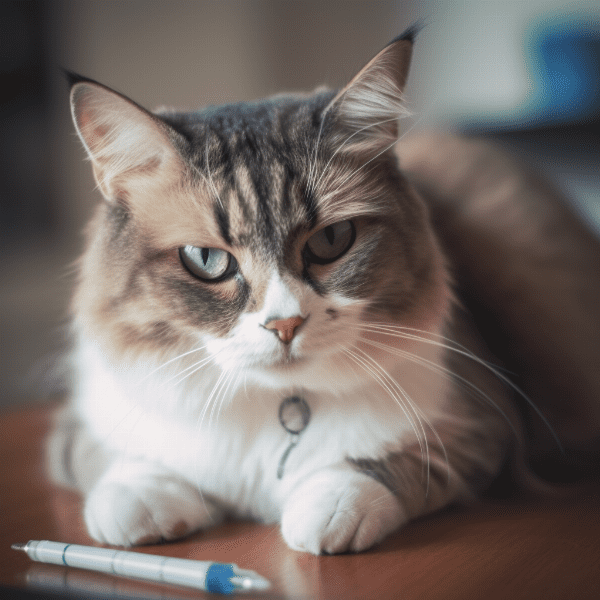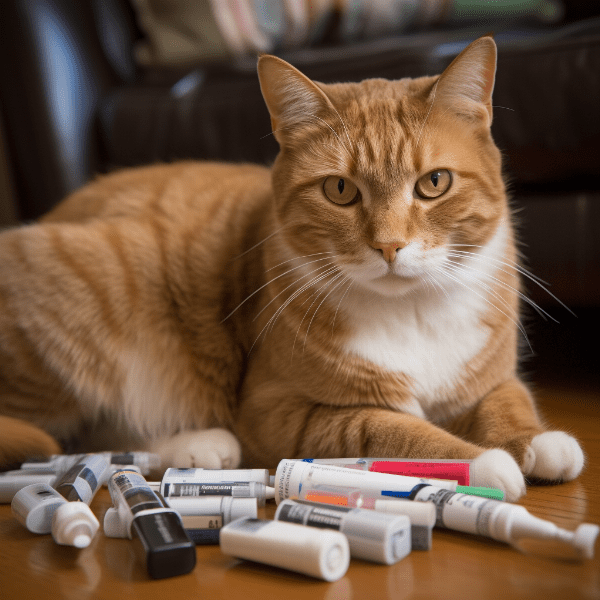Table of Contents
- Understanding Late-Stage Feline Diabetes
- Signs and Symptoms to Watch Out for
- Diagnosis and Treatment Options
- Managing Feline Diabetes Through Diet
- Insulin Administration and Monitoring
- Common Complications and How to Deal with Them
- Lifestyle Changes to Improve Your Cat’s Health
- Supportive Care for Cats with Late-Stage Diabetes
- Preventing Diabetes in Cats
- Final Thoughts and Additional Resources.
Understanding Late-Stage Feline Diabetes
Feline diabetes is a metabolic disorder that affects cats of all ages and breeds, with some cats being more predisposed to developing the disease than others. Diabetes occurs when a cat’s body can no longer produce enough insulin or use the insulin effectively, leading to high levels of glucose in the blood. When left untreated, diabetes can progress to a late-stage or severe form, which requires more aggressive treatment and management.
What Causes Late-Stage Feline Diabetes?
There is no one single cause for late-stage feline diabetes, but rather a combination of genetic and environmental factors. Some cats may be born with a genetic predisposition to diabetes, while others may develop the disease due to obesity, lack of physical activity, or a poor diet. In rare cases, diabetes may be a side effect of certain medications or other medical conditions.
How Does Late-Stage Feline Diabetes Affect Cats?
Late-stage feline diabetes can have significant and severe effects on a cat’s overall health and well-being. The high levels of glucose in the blood can cause damage to the kidneys, eyes, and other vital organs. Cats with late-stage diabetes may experience significant weight loss, lethargy, frequent urination, and increased thirst. They may also be at higher risk of developing other medical conditions, such as urinary tract infections and pancreatitis.
What Are the Risk Factors for Late-Stage Feline Diabetes?
While any cat can develop diabetes, there are some risk factors that may make certain cats more susceptible to the disease. These include obesity, inactivity, a high-carbohydrate diet, and certain medical conditions, such as hyperthyroidism and pancreatitis. Additionally, some breeds, such as the Burmese and Siamese, are more prone to developing diabetes than others.
When Should You See a Veterinarian?
If you suspect that your cat may have diabetes, it’s essential to schedule an appointment with a veterinarian as soon as possible. Some common signs of diabetes include increased thirst, frequent urination, lethargy, weight loss, and a poor appetite. If left untreated, diabetes can lead to life-threatening complications, such as diabetic ketoacidosis and neuropathy.
Understanding the causes, effects, and risk factors associated with late-stage feline diabetes can help you take proactive steps to manage and prevent the disease. By working closely with your veterinarian and making lifestyle changes, you can help your cat live a healthy and happy life, even with diabetes.
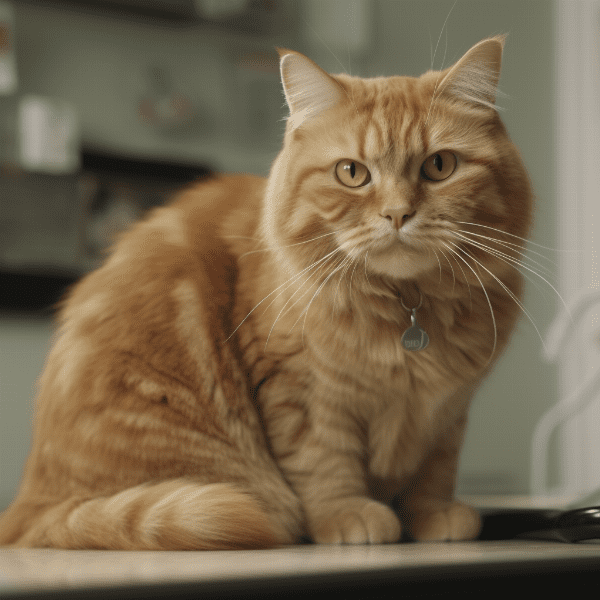
Signs and Symptoms to Watch Out for
Cats with late-stage diabetes may exhibit a variety of signs and symptoms that are important to be aware of. Early detection and treatment of diabetes can help prevent the disease from progressing to a severe or life-threatening stage.
Increased Thirst and Urination
One of the most common signs of late-stage feline diabetes is increased thirst and urination. Cats with diabetes may drink more water than usual and need to use the litter box more frequently. This is because the high levels of glucose in the blood make it difficult for the kidneys to reabsorb water, leading to dehydration.
Weight Loss and Decreased Appetite
Cats with late-stage diabetes may experience weight loss and a decrease in appetite. This is because the body is unable to use glucose for energy, leading to the breakdown of fat and muscle tissue. Cats with diabetes may also experience gastrointestinal symptoms such as vomiting and diarrhea.
Lethargy and Weakness
Cats with diabetes may appear lethargic or weak due to a lack of energy caused by the body’s inability to use glucose. They may also experience muscle weakness or trembling, particularly in the hind legs.
Changes in Gait and Mobility
Late-stage diabetes can also affect a cat’s gait and mobility. Cats may have difficulty jumping or climbing stairs and may develop a stiff or wobbly gait. They may also experience muscle wasting, particularly in the hind legs.
Changes in Vision
In some cases, cats with late-stage diabetes may experience changes in their vision, including cataracts and blindness. This is due to the high levels of glucose in the blood, which can damage the blood vessels in the eyes.
If you notice any of these signs or symptoms in your cat, it’s essential to schedule an appointment with your veterinarian as soon as possible. Early detection and treatment of late-stage feline diabetes can help prevent the disease from progressing and improve your cat’s quality of life.
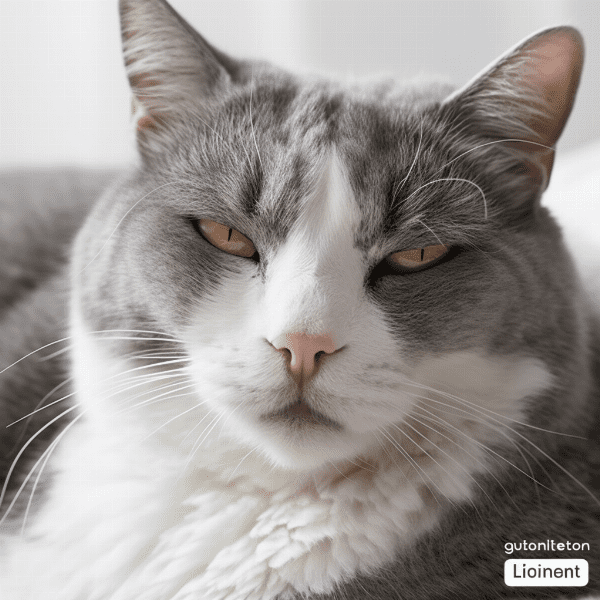
Diagnosis and Treatment Options
Diagnosing late-stage feline diabetes typically involves a combination of physical examinations, blood tests, and urine tests. Once a diagnosis is confirmed, treatment will focus on managing the disease and preventing complications.
Insulin Therapy
Insulin therapy is the primary treatment for late-stage feline diabetes. Insulin is a hormone that helps regulate glucose levels in the blood, and cats with diabetes are unable to produce enough insulin on their own. Your veterinarian will determine the appropriate type and dosage of insulin for your cat, which will be administered via injection once or twice daily.
Dietary Changes
Dietary changes can also play an important role in managing late-stage feline diabetes. Your veterinarian may recommend a low-carbohydrate, high-protein diet for your cat, which can help regulate blood glucose levels and promote weight loss. It’s important to work closely with your veterinarian to develop a diet plan that meets your cat’s specific nutritional needs.
Exercise and Weight Management
Exercise and weight management are also important components of managing late-stage feline diabetes. Regular exercise can help regulate blood glucose levels and promote weight loss, while weight management can help prevent complications such as obesity and joint problems.
Other Treatments and Therapies
In addition to insulin therapy, dietary changes, and exercise, there are other treatments and therapies that may be recommended for cats with late-stage diabetes. These include medications to manage complications such as urinary tract infections, regular dental cleanings to prevent dental disease, and monitoring for other medical conditions that may be related to diabetes.
Managing late-stage feline diabetes can be challenging, but with the right treatment plan and management strategies, cats with diabetes can live long and healthy lives. Work closely with your veterinarian to develop a comprehensive treatment plan that meets your cat’s individual needs and addresses any underlying medical conditions or complications.

Managing Feline Diabetes Through Diet
Diet plays a critical role in managing late-stage feline diabetes. Feeding your cat a well-balanced, nutritious diet can help regulate blood glucose levels and promote weight loss, which are essential for managing the disease.
Low-Carbohydrate, High-Protein Diet
A low-carbohydrate, high-protein diet is generally recommended for cats with late-stage diabetes. Carbohydrates are broken down into glucose during digestion, which can cause blood glucose levels to spike. Feeding your cat a diet that is low in carbohydrates and high in protein can help regulate blood glucose levels and promote weight loss.
Wet Food vs. Dry Food
Wet food may be preferable for cats with diabetes as it typically contains less carbohydrates and more moisture than dry food. Moisture is essential for cats with diabetes as it helps prevent dehydration, which can exacerbate the disease. However, it’s important to work with your veterinarian to determine the best type of food for your cat based on their individual needs and medical history.
Feeding Schedule and Portion Control
Feeding your cat on a consistent schedule and monitoring their portion sizes is also essential for managing late-stage feline diabetes. Your veterinarian may recommend feeding your cat small, frequent meals throughout the day rather than one or two large meals. This can help regulate blood glucose levels and prevent spikes and crashes.
Treats and Snacks
While treats and snacks can be a fun way to bond with your cat, it’s important to be mindful of what you’re feeding them, especially if they have diabetes. Treats should be low in carbohydrates and given in moderation to avoid spikes in blood glucose levels. You can also consider offering your cat low-carbohydrate, high-protein treats such as cooked chicken or turkey.
.

Insulin Administration and Monitoring
Insulin therapy is a critical component of managing late-stage feline diabetes. Insulin is administered through injections, which can be given at home once or twice a day. Administering insulin requires careful monitoring and attention to ensure that your cat receives the correct dosage and maintains healthy blood glucose levels.
Types of Insulin
There are several types of insulin that may be used to treat late-stage feline diabetes, including short-acting, intermediate-acting, and long-acting insulin. Your veterinarian will determine the appropriate type of insulin for your cat based on their individual needs and medical history.
Insulin Administration
Insulin is typically administered via injection under the skin, known as subcutaneous injection. Your veterinarian will teach you how to administer insulin at home, which involves using a syringe to inject the insulin into the scruff of your cat’s neck or the fatty tissue on their back. It’s important to follow your veterinarian’s instructions carefully and to administer insulin at the same time each day.
Blood Glucose Monitoring
Monitoring your cat’s blood glucose levels is essential for managing late-stage feline diabetes. Your veterinarian may recommend monitoring your cat’s blood glucose levels at home using a glucometer, which involves pricking your cat’s ear or paw to obtain a small blood sample. This can help you adjust your cat’s insulin dosage and feeding schedule as needed to maintain healthy blood glucose levels.
Hypoglycemia
Hypoglycemia, or low blood sugar, can be a side effect of insulin therapy. Signs of hypoglycemia in cats include lethargy, weakness, disorientation, and seizures. If you suspect that your cat is experiencing hypoglycemia, it’s essential to contact your veterinarian immediately.
Working with Your Veterinarian
Managing late-stage feline diabetes through insulin therapy requires close collaboration with your veterinarian. Your veterinarian can teach you how to administer insulin at home, monitor your cat’s blood glucose levels, and adjust their treatment plan as needed. It’s essential to communicate regularly with your veterinarian and to report any changes in your cat’s health or behavior.
By administering insulin correctly and monitoring your cat’s blood glucose levels, you can help manage late-stage feline diabetes and improve your cat’s quality of life.

Common Complications and How to Deal with Them
Late-stage feline diabetes can lead to several complications that require close monitoring and management. It’s essential to work closely with your veterinarian to prevent and address these complications and improve your cat’s quality of life.
Diabetic Ketoacidosis
Diabetic ketoacidosis (DKA) is a potentially life-threatening complication of late-stage feline diabetes. DKA occurs when the body breaks down fat for energy instead of glucose, leading to the buildup of ketones in the blood. Signs of DKA in cats include vomiting, lethargy, dehydration, and a fruity smell on their breath.
If you suspect that your cat is experiencing DKA, it’s essential to contact your veterinarian immediately. Treatment for DKA typically involves hospitalization, fluid therapy, insulin therapy, and monitoring for other medical complications.
Urinary Tract Infections
Urinary tract infections (UTIs) are a common complication of late-stage feline diabetes. UTIs can cause discomfort and pain for your cat and can lead to complications such as kidney damage and bladder stones. Signs of UTIs in cats include frequent urination, straining to urinate, and blood in the urine.
Neuropathy
Neuropathy is a nerve disorder that can occur in cats with late-stage diabetes. Neuropathy can cause weakness, numbness, and pain in the limbs, making it difficult for cats to walk and maintain their balance. Neuropathy typically develops over time and can be difficult to reverse once it occurs.
If you suspect that your cat has neuropathy, it’s essential to contact your veterinarian for diagnosis and management. Treatment for neuropathy typically involves managing the underlying diabetes and providing supportive care, such as physical therapy and pain management.
Dental Disease
Dental disease is a common complication of late-stage feline diabetes. Cats with diabetes are at higher risk of developing dental disease, which can lead to pain, tooth loss, and other complications. Regular dental cleanings and at-home dental care can help prevent and manage dental disease in cats with diabetes.
Working closely with your veterinarian and monitoring your cat for these and other potential complications can help prevent and manage late-stage feline diabetes. By taking proactive steps to manage the disease and address any complications, you can help your cat live a healthy and happy life, even with diabetes.

Lifestyle Changes to Improve Your Cat’s Health
In addition to medical treatment and management, there are several lifestyle changes you can make to improve your cat’s health and quality of life with late-stage feline diabetes.
Regular Exercise
Regular exercise is important for managing late-stage feline diabetes. Exercise can help regulate blood glucose levels, promote weight loss, and improve your cat’s overall health and well-being. Encourage your cat to play and engage in physical activity, such as chasing toys, climbing on scratching posts, and exploring their environment.
Stress Management
Stress can exacerbate late-stage feline diabetes and contribute to complications such as DKA. Managing stress can help improve your cat’s overall health and well-being. Provide your cat with a safe and comfortable environment, free from loud noises and other stressors. Consider using pheromone sprays or diffusers to promote relaxation and reduce anxiety.
Consistency and Routine
Consistency and routine are essential for managing late-stage feline diabetes. Establish consistent feeding and insulin administration schedules, and provide your cat with a predictable routine that helps reduce stress and anxiety. This can help regulate blood glucose levels and prevent complications such as hypoglycemia.

Supportive Care for Cats with Late-Stage Diabetes
In addition to medical treatment and lifestyle changes, supportive care can help improve your cat’s quality of life with late-stage feline diabetes. Supportive care includes providing your cat with comfort and care to manage any symptoms or complications associated with the disease.
Pain Management
Pain management is important for cats with late-stage feline diabetes, especially if they are experiencing complications such as neuropathy. Your veterinarian can provide guidance on pain management options, such as medications or physical therapy, to help improve your cat’s comfort and mobility.
Hydration
Hydration is essential for cats with late-stage feline diabetes, as dehydration can exacerbate the disease and lead to complications. Encourage your cat to drink plenty of water and provide wet food, which can help increase their water intake. If necessary, your veterinarian may recommend subcutaneous fluid therapy to help maintain your cat’s hydration levels.
Wound Care
Cats with diabetes are at higher risk of developing wounds and infections, especially if they have neuropathy or other complications. Proper wound care is essential for managing late-stage feline diabetes and preventing infections. Keep your cat’s wounds clean and dry, and monitor them for signs of infection, such as redness, swelling, or discharge.
Comfort and Support
Late-stage feline diabetes can be challenging for both cats and their owners. Providing your cat with comfort and support can help reduce stress and anxiety and improve their overall well-being. Consider providing your cat with a comfortable bed or blanket, or spending extra time playing and bonding with them.
End-of-Life Care
Late-stage feline diabetes can ultimately lead to end-of-life care decisions for your cat. It’s important to work closely with your veterinarian to develop a plan for managing your cat’s symptoms and providing supportive care in their final days. Your veterinarian can also provide guidance on end-of-life care options, such as hospice care or euthanasia.
By providing supportive care for your cat with late-stage feline diabetes, you can help improve their quality of life and manage their symptoms and complications. Work closely with your veterinarian to develop a comprehensive treatment plan that addresses your cat’s individual needs and preferences.
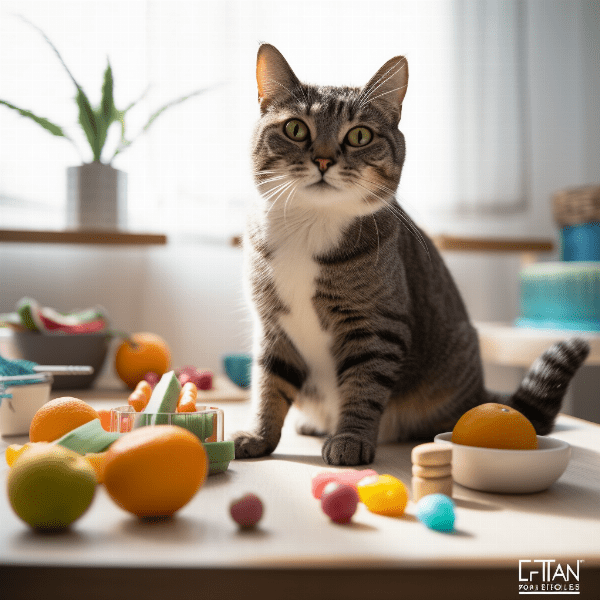
Preventing Diabetes in Cats
Preventing late-stage feline diabetes can help ensure your cat lives a healthy and happy life. While some cats may be genetically predisposed to diabetes, there are several steps you can take to reduce your cat’s risk of developing the disease.
Healthy Diet and Weight Management
Feeding your cat a healthy, well-balanced diet and maintaining a healthy weight can help reduce their risk of developing late-stage feline diabetes. Avoid feeding your cat high-carbohydrate foods and treats, and provide them with regular opportunities for exercise and physical activity.
Regular Veterinary Care
Regular veterinary care is important for preventing late-stage feline diabetes. Regular check-ups and blood glucose monitoring can help detect and manage potential risk factors for diabetes, such as obesity or insulin resistance. Your veterinarian can also provide guidance on nutrition, exercise, and other lifestyle changes to reduce your cat’s risk of developing diabetes.
Environmental Enrichment
Providing your cat with a stimulating, enriched environment can also help reduce their risk of developing late-stage feline diabetes. Provide your cat with plenty of toys, scratching posts, and comfortable places to sleep, and create a safe and comfortable living space that reduces stress and anxiety.
Avoiding Stress and Anxiety
Stress and anxiety can contribute to the development of late-stage feline diabetes. Avoid exposing your cat to stressful or anxiety-inducing situations, and provide them with plenty of opportunities for relaxation and rest.
Regular Teeth Cleaning
Regular dental cleanings and at-home dental care can also help reduce your cat’s risk of developing late-stage feline diabetes. Dental disease and inflammation can contribute to insulin resistance and other risk factors for diabetes, so it’s important to maintain your cat’s dental health.
By taking these preventive measures and working closely with your veterinarian, you can help reduce your cat’s risk of developing late-stage feline diabetes and ensure that they live a healthy and happy life.
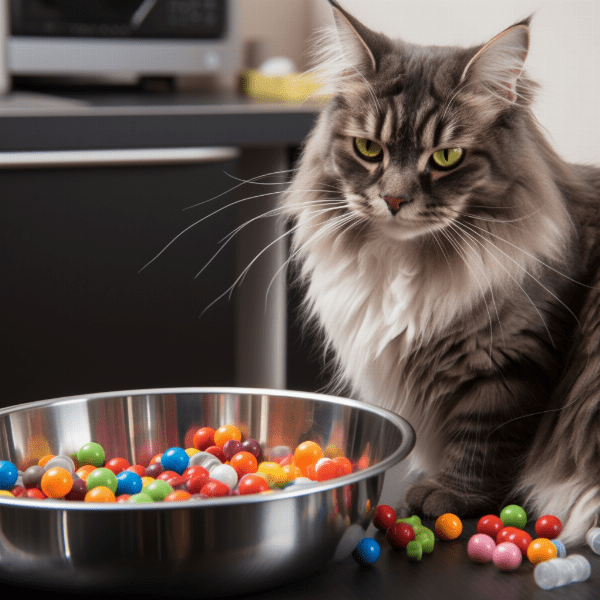
Final Thoughts and Additional Resources.
Late-stage feline diabetes can be a challenging condition to manage, but with the right treatment and lifestyle changes, you can help improve your cat’s quality of life. By working closely with your veterinarian and providing your cat with supportive care, you can help manage their symptoms and prevent potential complications.
If you suspect that your cat may have late-stage feline diabetes, it’s important to contact your veterinarian for diagnosis and treatment. Your veterinarian can provide guidance on managing the disease, administering insulin, and making lifestyle changes to improve your cat’s health.
There are also several resources available to help you manage late-stage feline diabetes. The American Association of Feline Practitioners (AAFP) and the International Society of Feline Medicine (ISFM) both offer guidelines and resources on managing feline diabetes, including information on insulin therapy, diet management, and environmental enrichment.
In addition, there are several online communities and support groups for owners of cats with late-stage diabetes. These groups can provide valuable support, guidance, and resources for managing the disease and improving your cat’s quality of life.
Remember, managing late-stage feline diabetes requires dedication and commitment, but with the right treatment and care, you can help your cat live a healthy and happy life.
